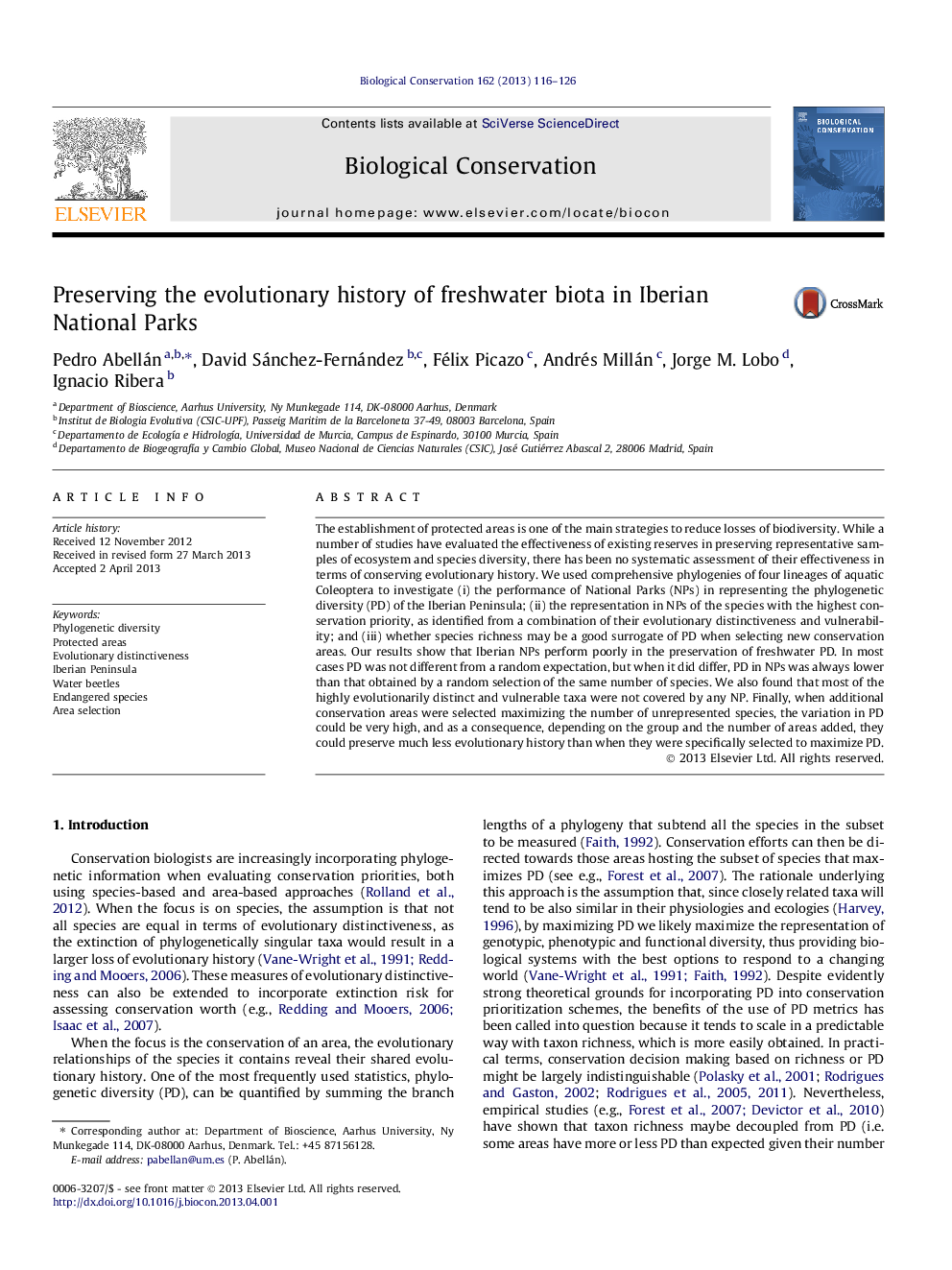| Article ID | Journal | Published Year | Pages | File Type |
|---|---|---|---|---|
| 6300527 | Biological Conservation | 2013 | 11 Pages |
Abstract
The establishment of protected areas is one of the main strategies to reduce losses of biodiversity. While a number of studies have evaluated the effectiveness of existing reserves in preserving representative samples of ecosystem and species diversity, there has been no systematic assessment of their effectiveness in terms of conserving evolutionary history. We used comprehensive phylogenies of four lineages of aquatic Coleoptera to investigate (i) the performance of National Parks (NPs) in representing the phylogenetic diversity (PD) of the Iberian Peninsula; (ii) the representation in NPs of the species with the highest conservation priority, as identified from a combination of their evolutionary distinctiveness and vulnerability; and (iii) whether species richness may be a good surrogate of PD when selecting new conservation areas. Our results show that Iberian NPs perform poorly in the preservation of freshwater PD. In most cases PD was not different from a random expectation, but when it did differ, PD in NPs was always lower than that obtained by a random selection of the same number of species. We also found that most of the highly evolutionarily distinct and vulnerable taxa were not covered by any NP. Finally, when additional conservation areas were selected maximizing the number of unrepresented species, the variation in PD could be very high, and as a consequence, depending on the group and the number of areas added, they could preserve much less evolutionary history than when they were specifically selected to maximize PD.
Keywords
Related Topics
Life Sciences
Agricultural and Biological Sciences
Ecology, Evolution, Behavior and Systematics
Authors
Pedro Abellán, David Sánchez-Fernández, Félix Picazo, Andrés Millán, Jorge M. Lobo, Ignacio Ribera,
